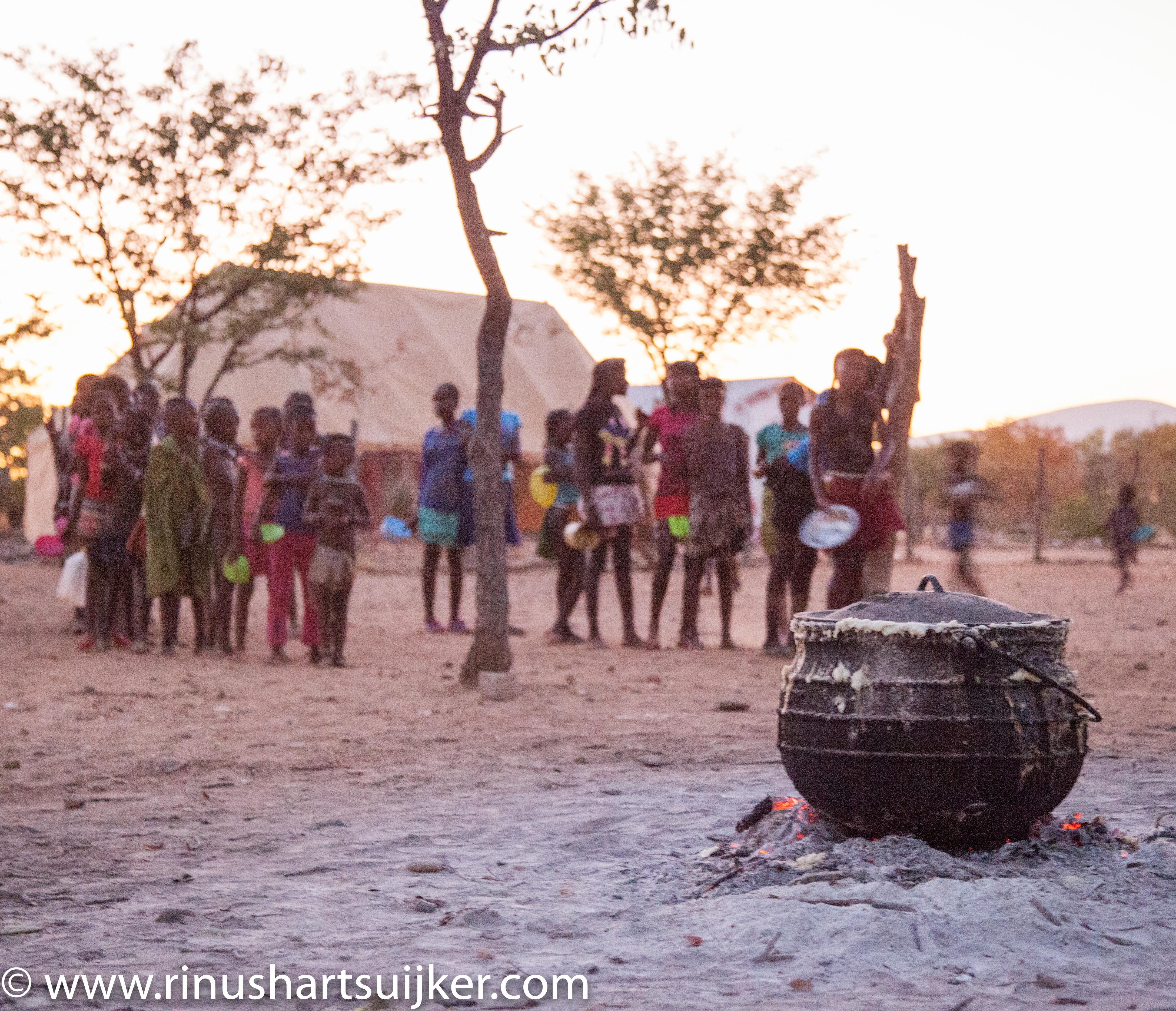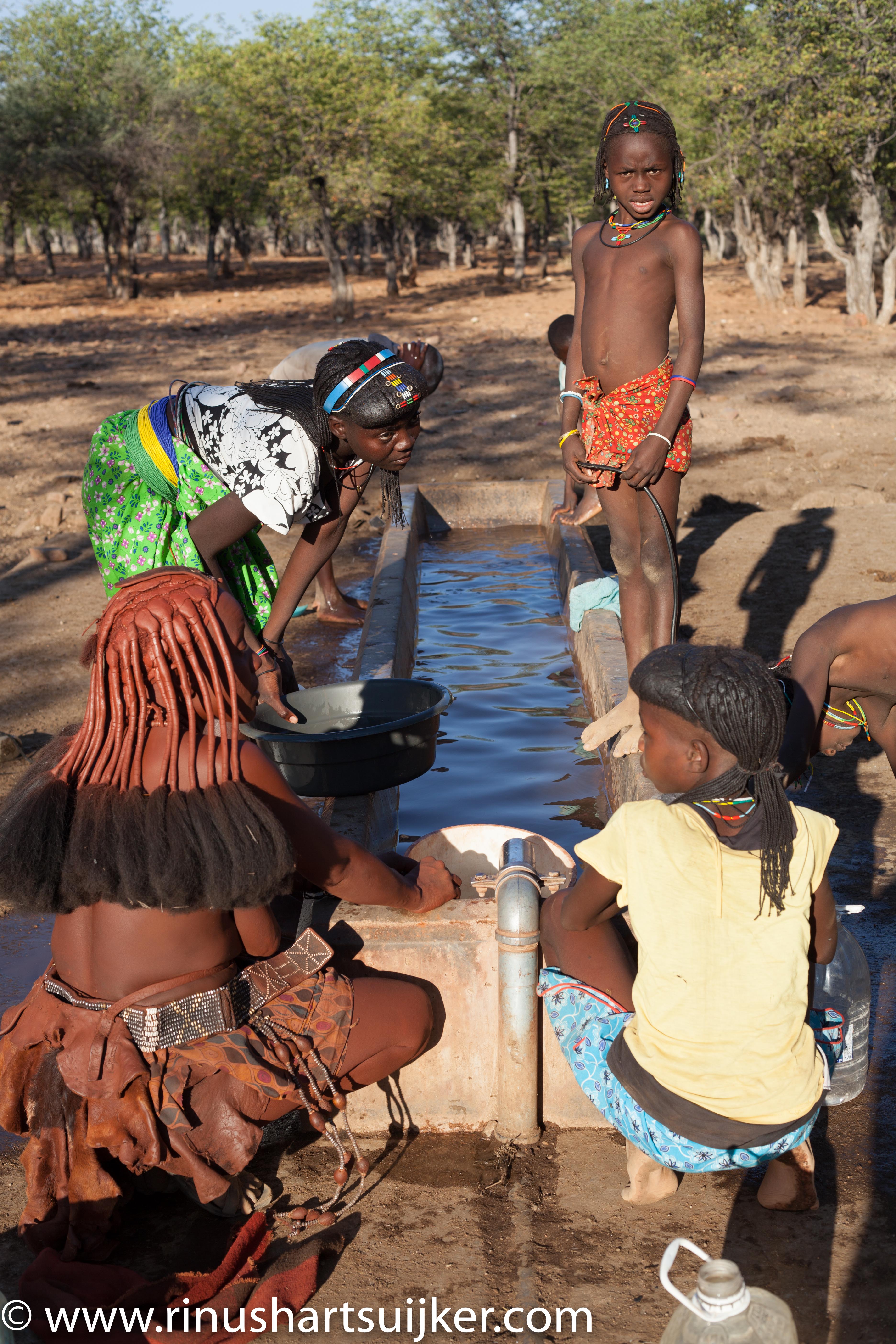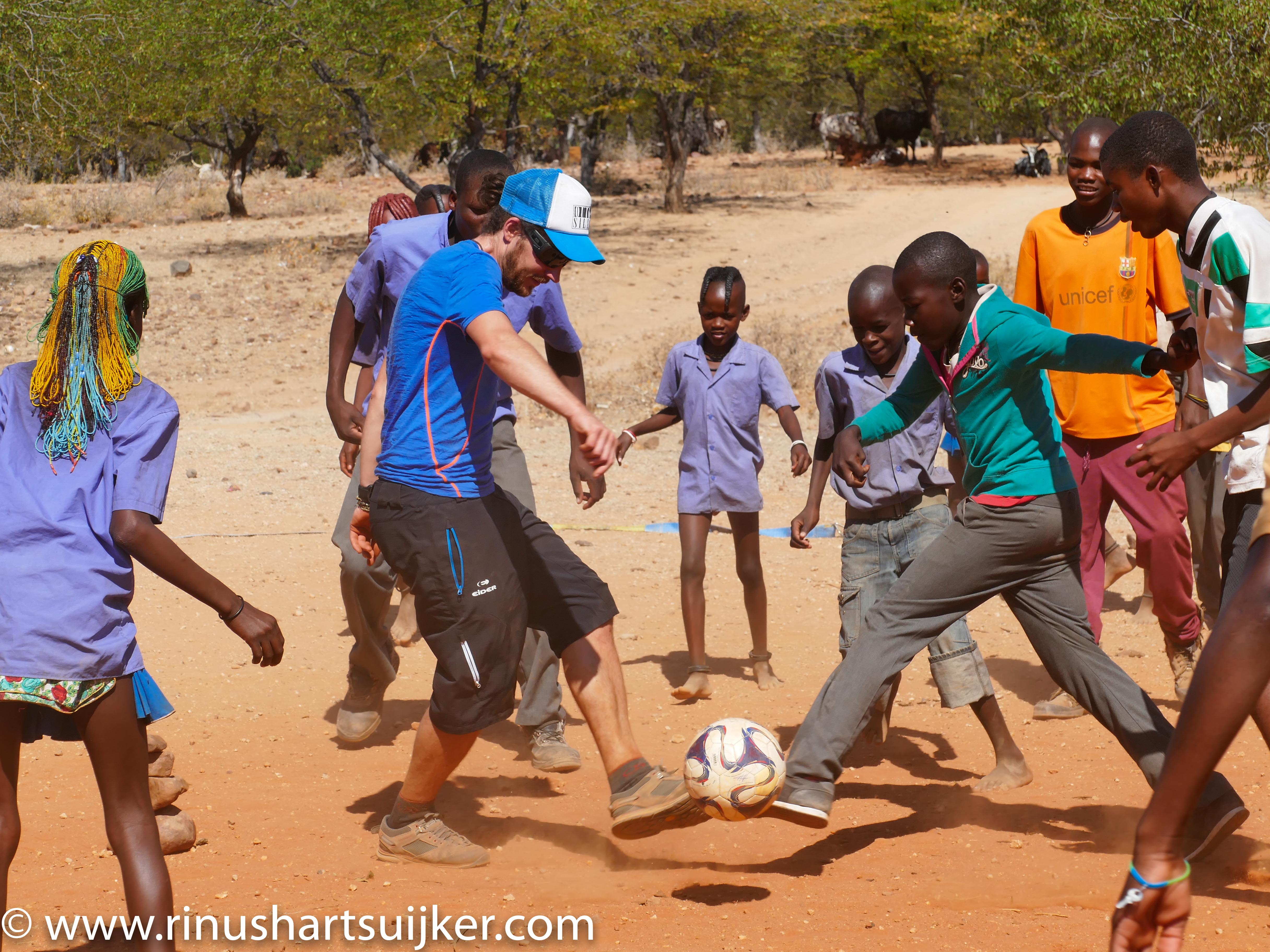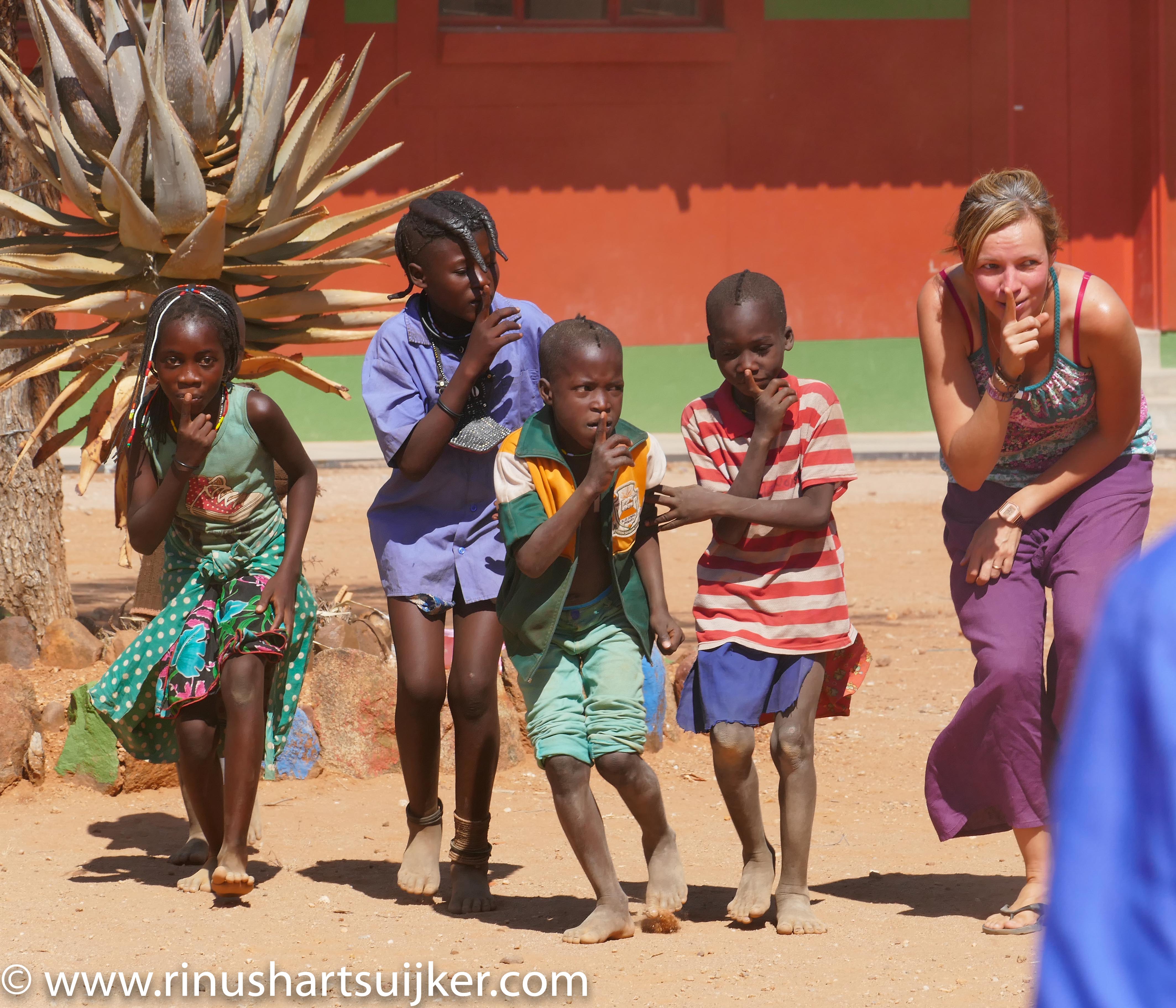Omuhonga Primary school
A long, narrow sandy track leads us through low bushes. Around us we can see small huts, built from thin branches put together tightly and fixed in the ground. The roof is made of a combination of dried grass and clay. Next to the huts we see women who almost have the same colour as the brown huts and disappear in their surroundings. They put a combination of mud, animal grease and plants on their skin to prevent themselves from getting burned by the scorching sun.
We are on our way to the Omuhonga Primary school, a local school where children can go to school when their parents allow it. A small road leads us there and we can distinguish a few buildings. The sun is about to set and luckily it starts to cool down. People are moving around and move from the shadow into places to catch the last sun. We drive onto the school premises and park our cars in front of the main building. It is a stone building in a U-shape, painted white, with red window frames and a motivating text on one of the walls.
School hours are over, but most of the teachers are still there. Most of them grew up in the area and belong to one of the tribes represented in the area. The only difference is that they now wear western clothes instead of the traditional garb. Minutes after our arrival the children start gathering at the middle of a field, as if they were being called by a bell. In the middle of this field is a giant pot cooking on a fire. It is filled with white porridge and we can see the bubbles on the surface. An elderly woman with a long apron stands next to the pot and tries to stir the heavy mass with a long wooden ladle.
The children start to form long rows. The children who haven’t yet queued up are still looking around for plates, which are scattered around the schoolyard as if they are Easter eggs. Not everyone seems successful. When the plates are all taken, the less fortunate have to make do with cups, containers or lids. Finally, when everyone is in line, the scooping up of the porridge begins. The older children help with doing this. With a plate the porridge is scooped out of the steel pot and handed out in even portions. The whole process is very smooth and without talking dinner is being served.
We are watching this on the sidelines with our strange cars in the background, but except for some curious glances no really pays attention. One of the teachers stands next to us and explains that this is the meal the children get every day. Most of these kids stay in the hostel that belongs to the school, because they live too far away to walk there every day. One meal in the morning (11am) is paid for by the government, a second meal (6pm) is paid for by an international organization that supports education in third world countries. You cannot study on an empty stomach! What they are getting is the same everyday: corn porridge. The students all spread out over the school’s property to eat and the only thing left behind is a dust cloud and some older boys fighting over who gets the last out of the pot. The teacher tells us that the last of the porridge is always burned and it is the most popular among the kids. We walk away from the school and we see several small groups of kids sitting on the ground. With their fingers they scoop up the porridge. We get a spot assigned to camp behind the school and set up our tents.

It is 5am when we wake up from all the noise around our tent. I don’t really want to, but I open my eyes and look through the fly screen to see what is going on. The sun has just come up and it is still pretty cool while everything has an orange glow. The most beautiful time of the day! A little distance away from our camp a few children stop shortly in their tracks to have a look at these odd cars in the middle of the school’s property. They hurry on after this and walk to the water trough at the other end of the property. This waterpump and trough are donated by an Icelandic organization. It was built to get water for the Himba people and their cattle who used to be a nomadic tribe so that they could be sure of water.
Throughout the years the Himba’s established villages and stayed more in one place and with that there also cam a school. The entire population and kettle around this water point are now dependend on this source, for as long as there is no water elsewhere. They built a 12.000 liter watertank on a steel frame and the pump is running due to 4 solarpanels. The tank doesn’t get any chance to fill up during the day, and as soon as the sun comes up, the first people are already waiting for the water. The school is now trying to get the funds for a second watertank, because the amount of people has outgrown the capacity of just one tank.

When the students want to participate in the school’s program it is expected of them that they are clean. When you want to wash yourself with the first fresh water of the day, you have to be an early bird. This is the reason we heard the commotion around our tent this morning. At 6.40am lessons start and this is announced by a loud bell summoning all the children. At the moment we hear this bell we are all already wide awake and not all of us voluntarily.
It quiets down quickly after the lessons start and we have our breakfast. During this we talk about the food the children get here and how it is always the same. We decide to see what we have with us that we can give and maybe give a little bit of variation to the diet. We come up with pasta, sugar, potatoes, flour and rice.
I am on my way to the principal to donate the food and I can see the students look at me from behind their desks through the open windows.The principal is very happy with the food we bring him. He tells us that a lot of his staff are not qualified teachers and as soon as he hears that Helga and I are he asks if the four of us would be so kind to think of something to do that afternoon, entertaining 200 kids. He says that the children learn more from a few hours with us than they do during their normal school lessons. The amount of children scares us a bit, but we agree to do it and start planning right away.
We decide to do four different activities in which groups of kids rotate until they’ve all done them. We are going to be doing bottle-soccer (without bottles, but with a pile of stones), dancing, slacklining & Boule and drawing. Communicating is sometimes difficult, but the the aid of the teachers we manage to make our activities work.


At the end of the day, we are all exhausted. The school organizes some singing and dancing for us by the students as a thank you and we enjoy this very much. After the activities the children are now less shy and curiosity has definitely won. We are surrounded by curious kids until well after sunset and when they go, we are glad for the peace and quiet.
